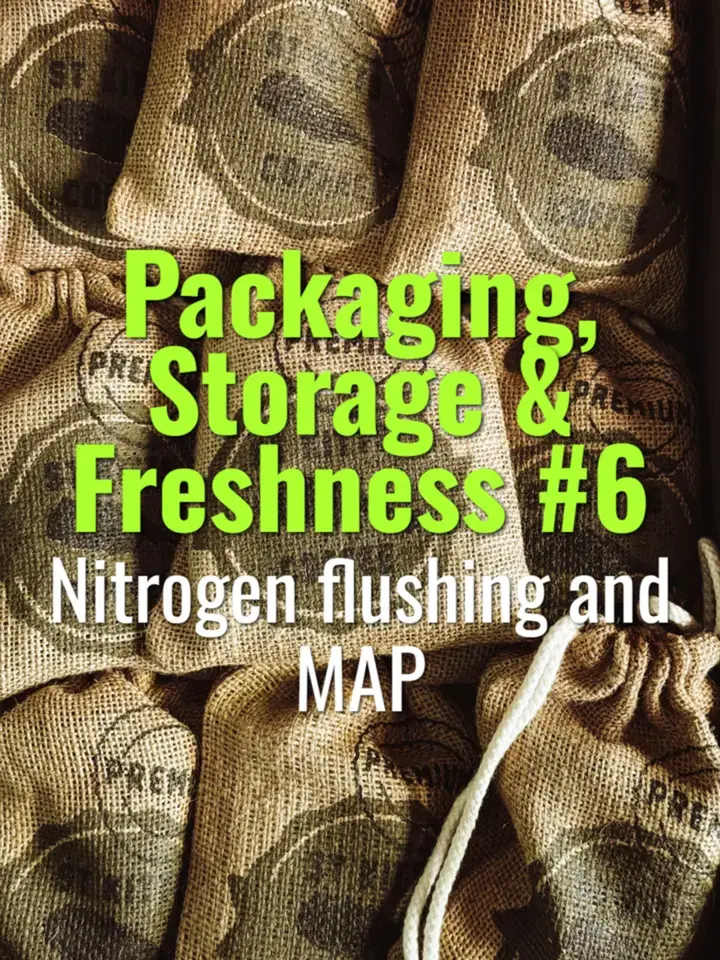Nitrogen flushing and MAP
How nitrogen flushing and Modified Atmosphere Packaging (MAP) are used to preserve roasted coffee freshness by controlling oxygen exposure.
- Coffee Basics Nerds
- 2 min read
Article 6 of 12 in Packaging, Storage & Freshness/

The Problem: Oxygen
- Oxygen is the main driver of oxidation and staling in roasted coffee.
- Aromatic compounds degrade quickly in its presence.
- Standard packaging without oxygen control leads to flat, rancid flavors within weeks.
Nitrogen Flushing
- Process: Bags are flushed with nitrogen gas before sealing, displacing oxygen.
- Nitrogen is inert, odorless, and food-safe.
- Extends shelf life by minimizing oxidation while allowing beans to degas naturally.
- Often paired with one-way valves to vent CO₂.
Modified Atmosphere Packaging (MAP)
- MAP replaces oxygen inside packaging with a controlled gas mix.
- Most common is 100% nitrogen; sometimes CO₂ blends are used.
- Provides a protective atmosphere for roasted beans, similar to vacuum sealing but without crushing delicate beans.
Benefits
- Dramatically slows down staling and rancidity.
- Preserves aroma, flavor, and crema potential in espresso.
- Extends shelf life from weeks to several months (if sealed properly).
Applications
- Widely used by commercial roasters for retail and wholesale.
- Suitable for whole beans and pre-ground (though whole beans still last longer).
- Essential for long-distance export shipments.
Limitations
- Once the bag is opened, oxygen exposure resumes immediately.
- Does not replace need for airtight, cool, and dark storage.
- Requires specialized equipment and costs more than standard sealing.
Summary
Nitrogen flushing and MAP are industry-standard techniques to extend coffee shelf life. By replacing oxygen with an inert atmosphere, they protect roasted beans from staling, ensuring coffee reaches consumers with optimal freshness, aroma, and flavor.